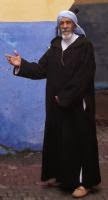
The Moroccan babouche is a very durable and comfortable leather slipper.Traditionally worn all over Morocco. Yellow is the traditional colour but the babouche also comes in many different colours. The traditional babouche has a pointed toe wereas the Berber babouche has a more rounded toe. The name babouche is also used for nearly all types of Moroccan slipper or shoe.
Hand Made:
At Shop Morocco we offer Traditional and berber babouches, Plus a wide range of hand made babouches. Our close friend Driss has been making babouches in his home town Tangiers, for more than 40 years. His skill and craftmanship is unbeatable. Now working close with Shop Morocco, Driss makes babouches to order.
Perfect gift:
Slippers have been a traditional gift for many years especialy at Christmas, The hand made berber babouche is the perfect gift, warm, comfortable and durable. They look good too.









